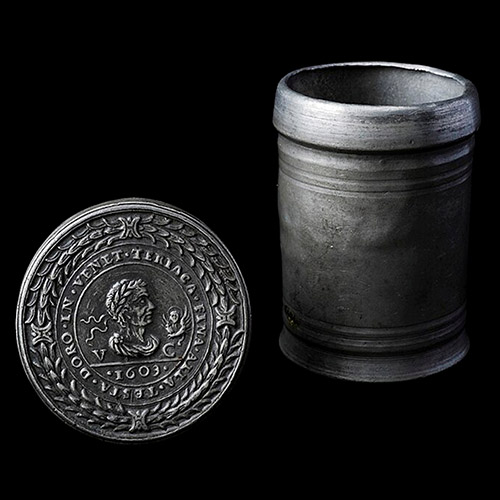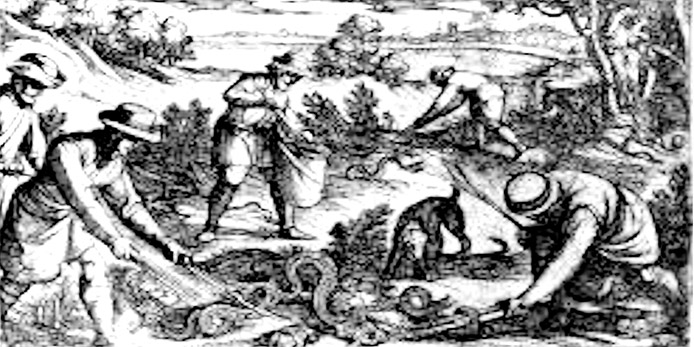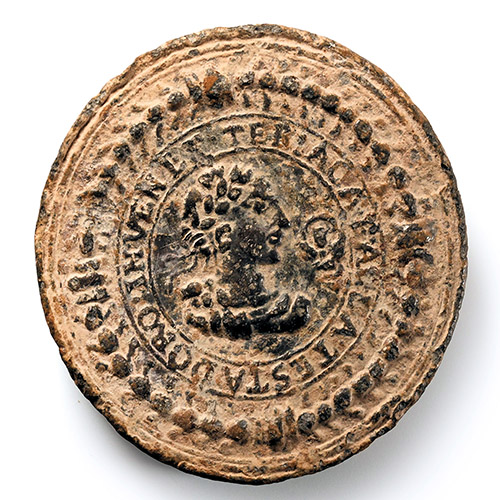Home > Stories by TimeLine Auctions
Stories by TimeLine Auctions
Rooting Out Snakes And Fakes
Mithridates VI, ruler of the Kingdom of Pontus in northern Anatolia from 120 to 63 BC, dominated Asia Minor and the Black Sea region, and attempted to break Roman rule in Asia and the Hellenic world. Fearing death at the hands of food poisoners believed to have murdered other members of his family, Mithridates built-up an immunity to venoms by regularly ingesting sub-lethal amounts of the most dangerous toxins. This practice, now known as mithridatism, is named after him.
Mithridates also concocted theriaca, a syrupy liquid made from numerous ingredients, including the flesh of reptiles. Variations using other strange and exotic ingredients appeared over the centuries in different cultures, some in continuous use as cures for many afflictions and illnesses into the 1800s, and even beyond.
TimeLine Auctions Lot 2199 in 9th Sept. 2025 auction.
Theriaca Venice Triacle lead box lid, Venice, 17th century .. 1¾ ins. Est: £250-350.
For example, in the 1st century AD a Cretan physician named Andromachus experimented with his own version, which soon won wide acclaim as Theriaca Adromachi. Nero, whose court physician added opium poppy seeds and adder flesh to his recipe, used it; as did Marcus Aurelius and Septimius Severus. Later medieval monarchs, including Alfred the Great, Charlemagne, Henry VIII, and Elizabeth the First featured among rulers who seem to have had great faith in the strange cure.

Pewter theriac container, Venice, Italy, 1603. (Image copyright The Wellcome Collection; used here under a Creative Commons Licence.) The lid is inscribed: TERIACA FINA ALLA TESTA DORO IN VENET, which translates as: At the sign of the golden head in Venice [..] In many cities, including Venice, Montpellier and Toulouse, theriac was made under official supervision to prevent fake medicines being sold.
The witches in Shakespear’s play Macbeth, added fillet of a fenny snake [adder] to their boiling cauldron. The Bard’s words reflected widespread Elizabethan belief that snakes carried an antidote to protect themselves against their own venom. This was taken as truth because the hair-of-the-dog-that-bit-you principal had already embedded deeply in the national psyche. Indeed, demand for snake flesh to brew homeopathic remedies almost eradicated snakes throughout Europe during those centuries.

Majolica drugs jar used in the 17th century to store theriaca.
Public domain image.
The popularity of pilgrimages encouraged monasteries to use the knowledge they gained while translating Greek and Roman medical manuscripts to produce their own versions of theriac and other cures which they sold, even freely administered, to pilgrims who arrived at monastic hospitals and guest houses across Europe. Care of sick travellers and pilgrims became part of the duties of monks and nuns. They protected their monopolies, and took steps to prevent fake versions of their medications flooding markets and fairs when plagues and epidemics broke out in towns and cities. Many of the best-known hospitals in London started as houses for the care of the sick, including St. Bartholomew's which traces its beginnings to 12th century monks. References to theriaca, or Venice Treacle, were retained in the London Pharmacopeia until about a hundred years ago, though the concoction’s constituent parts altered with the passage of centuries. At one time it contained seventy-three ingredients.

Medieval snake hunters seeking medicinal ingredients.
Public domain image.
Throughout the Middle Ages European apothecaries advertised their own versions of theriaca, often calling it Mithridatium. It found enthusiastic support from those who could afford exorbitant selling prices. In some countries laws directed apothecaries to display all their ingredients and to prepare the Mithridatium in public squares and other locations where watchful eyes deterred any attempts to cheat purchasers with fake recipes. After preparation the most expensive versions was kept in ornately decorated pots and jars, many of them illustrating scenes from the life of Mithridates. Further down the social scale quacks offered cheaper varieties, supplied in plainer containers, to poorer customers. Thus Mithridates’ universal antidote became the most popular and longest-lived prescription in history. A modern version of Mithridatium was in fact advertised by a pharmacy in Rome as recently as 1984.
To finish in a lighter mood … the poet A.E. Houseman wrote a few lines about Mithridates and his enemies in his famous poem, A Shropshire Lad:
They put arsenic in his meat
And stared aghast to watch him eat;
They poured strychnine in his cup
And shook to see him drink it up:
They shook, they stared, as white as shirts;
They it was their poisons hurt.
–I tell the tale as I heard it told.
Of Mithridates .. he died old.
Brett Hammond, TimeLine Auctions, 5th August 2025





